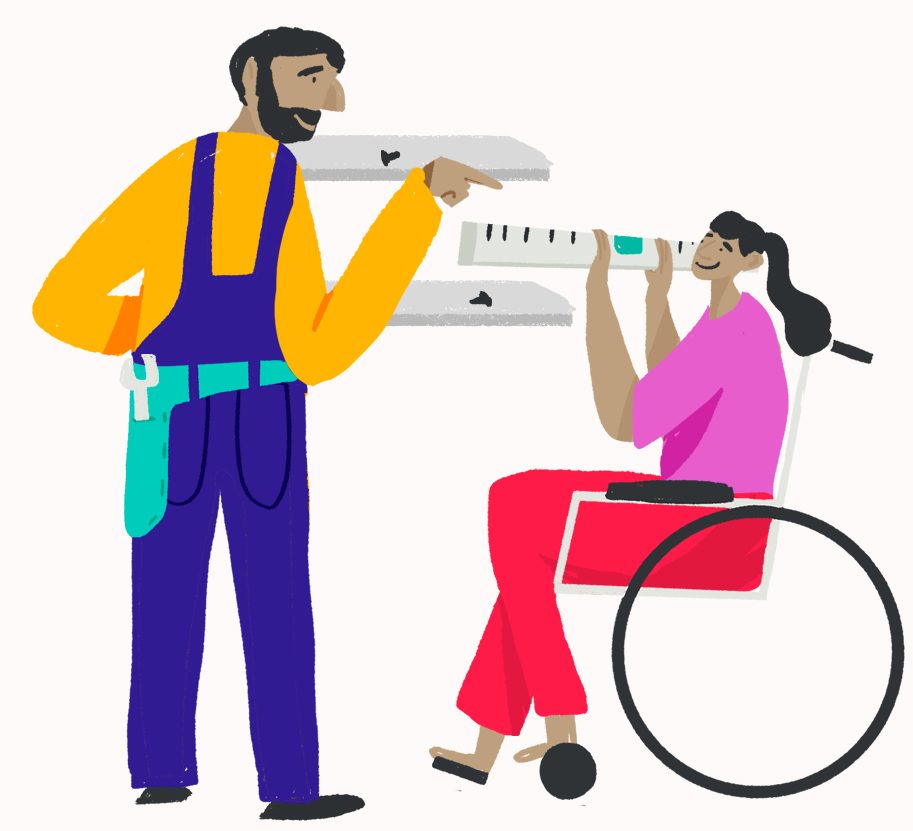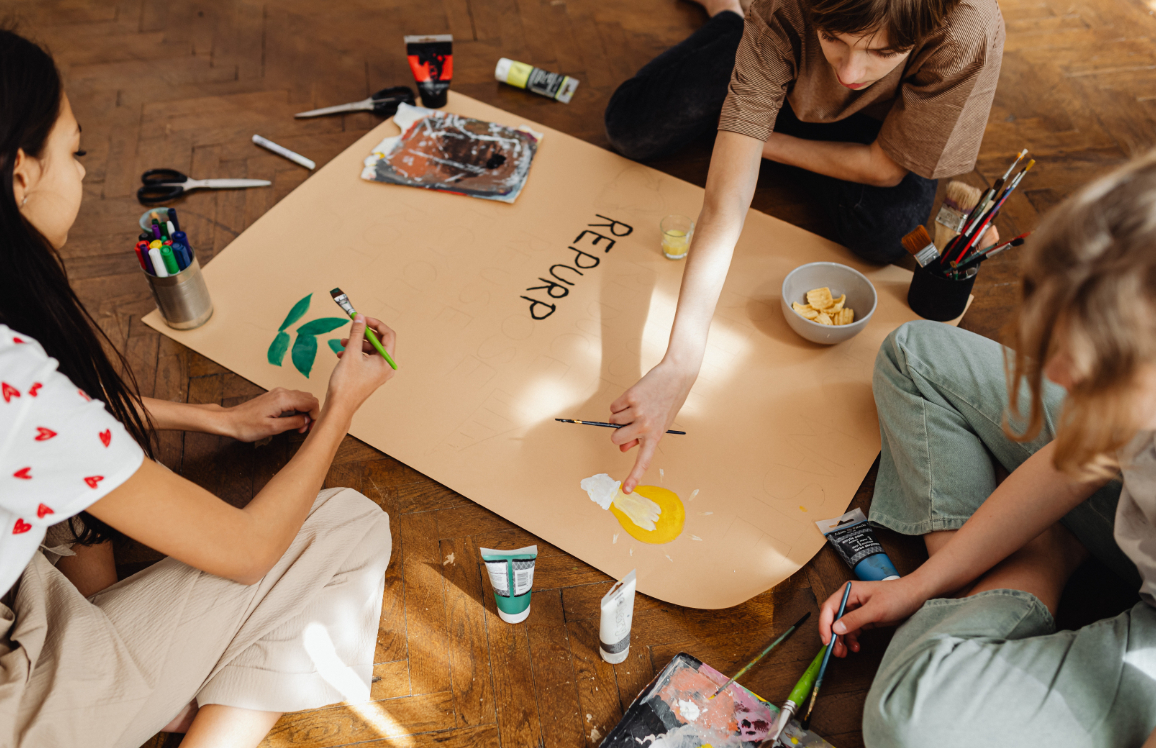When we think of creativity, lots of us picture an artist splattering paint in a studio. Or teens inventing new TikTok dances every other day. But here’s the scoop – creativity can be expressed in any subject, and it’s linked with success in academic and professional life.
A creative person is really anyone who can be innovative in the way they solve problems. And the great news is that it’s not something kids are either born with or not. It can be encouraged and practiced – especially with your help. Let’s dive into 6 key ways you can encourage creativity in your teen.
- Make a habit of asking questions
- Reframe mistakes
- Give them time and space
- Encourage a love for stories
- Inspire them to try new things
- Encourage journaling
1. Make a habit of asking questions
Questions– especially open-ended ones encourage curiosity. And when your teen is curious, they can feel inspired to experiment and take risks. A curious mindset is fuel for creative thinking.
To start building this way of thinking with your teen, try leading by example. Education researcher Prof Guy Claxton recommends ‘collecting questions’. You can write out questions or problems that need solving, and post them on the fridge where they’re nice and visible. These can be questions about solving a problem at home (“how do we train the dog to roll over?”), or an issue facing the wider world (“how can we get more people to recycle?”). At the end of the week, tackle those questions with your teen.
This simple activity shows your teen that they don’t have to know the answers straight away–that it’s OK to take time to work through a question. Prof Claxton calls this slower, more playful kind of thinking, the ‘Tortoise Mind’. Where there’s less of a rush and less at stake, your teen can take the time to think everything through and work out creative solutions.


2. Reframe mistakes
Another way you can help your teen develop a creative mindset is by helping them get comfortable with making mistakes. We all know that teens can be particularly self-conscious, and often they’re especially afraid of looking stupid if give a wrong answer in class.
By normalising mistakes at home, you can help your teen realise that they don’t need to feel ashamed when they do the same. An easy way to do this is by sharing your own mistakes with them openly. So over dinner, you could tell them about a meeting at work you wish you’d organised better, or how you in fact burnt the dinner you’d planned, and that’s why you’re having fish fingers. Being open about slipping up and showing how you push forward can mean when they next get stuck on their homework, or say the wrong answer in class, they can simply learn from it and crack on. That way, over time they can become more likely to see challenges as opportunities, and instead of giving up, they can think of new and creative ways to get around it.
3. Give them time and space
When your teen is stuck with a tricky homework question, you might be tempted to jump in and rescue them. Mum saves the day once again! But by showing them the answer too quickly (if you’re enough of a whizz to make sense of their homework), you might actually be getting in the way of their creative thinking. Encouraging them to keep trying – and giving them time and space to tackle it on their own, can be just the thing they need to push through and work out a creative solution. By telling them that it’s ok to spend a while on the same problem, you’re teaching them not to panic, and to try a new angle of approach.
Outside school and studies, letting them have unstructured time can also be a good way to encourage creative thinking. When their minds have a chance to wander – free of extra-curricular activities or other commitments – they’re more likely to think creatively and have ideas. We’re not saying you should pull them off the football team, but leaving them a bit of time each week to just be could give them valuable time to find their creativity.
4. Encourage a love for stories
Stories– real or fictional, encourage new ways of looking at the world. Any time your teen can step into someone else’s shoes, it gives them a chance to imagine a different way of looking at things – a key ingredient for any creative thinking.
Books are excellent at helping your child imagine new realities– but they’re not the only way. They can access stories through magazines, podcasts, docuseries, comics, blogs–whatever form speaks to them.
Here are a few recommendations to help spark your teen’s imagination:
Magazines: Scholastic Action, Upfront, Science World, Scholastic Art, Teen Breathe
Podcasts: Socially Awkward, Ted Talks Daily, You’re Dead to Me, My Favourite Murder, Stuff to Blow Your Mind, Science Friday, Teenage Therapy
Docuseries: Blackfish, Chasing Ice, Miss Representation
Books: ‘The Quiet at the End of the World’ by Lauren James, ‘Instructions for Dancing’ by Nicola Yoon, ‘Medusa’ by Jessie Burton, ‘When Shadows Fall’ by Sita Bramachari


5. Inspire them to try new things
How can your teen know if they’d be amazing at coding (which is super creative!), if they’ve never tried it before? The more ideas, activities and challenges your teen knows about, the better the chances they’ll find something they’re passionate about.
If you can, take them along to concerts, exhibitions, shows, and local talks – or find the online versions of all these things. Help them bake a cake for the first time. Encourage them to speak to neighbours and mentors who are experts in different subject areas. Even if these new activities don’t turn into lifelong passions, they’ll help your teen develop a curious mindset while giving them a fresh perspective.
6. Encourage journaling
Journals are a great tool for creative thinking. It’s a place where your teen can jot down their ideas and build on them over time. It’s also a great way for them to explore their own thoughts and feelings on the page – in private, not on TikTok! Writing things down makes it easier for them to see what’s going on in their heads. This can help them practice self-reflection, and find solutions to all sorts of problems – emotional, practical or artistic. They might even discover a love for creative writing.
Tip: journals with grids vs lined paper give your teen more freedom because they can write and draw their thoughts, feelings and ideas.
There’s creativity in everyone. By encouraging your child to discover it in themselves, you’re setting them up to enjoy learning and find what they’re passionate about – in school and in life. You might even find some of your own creativity along the way.




